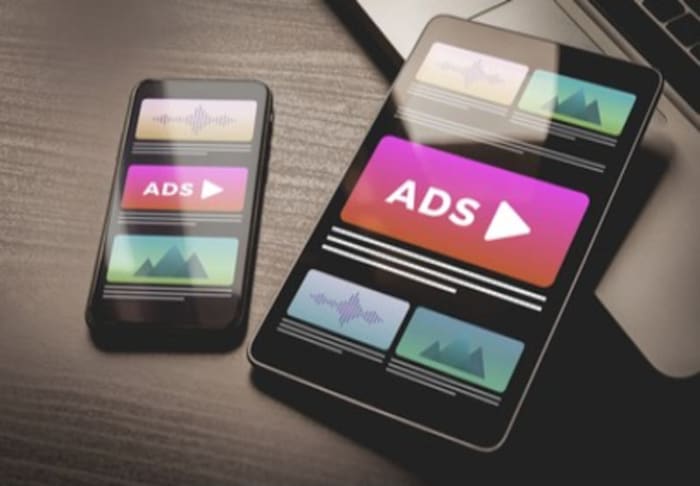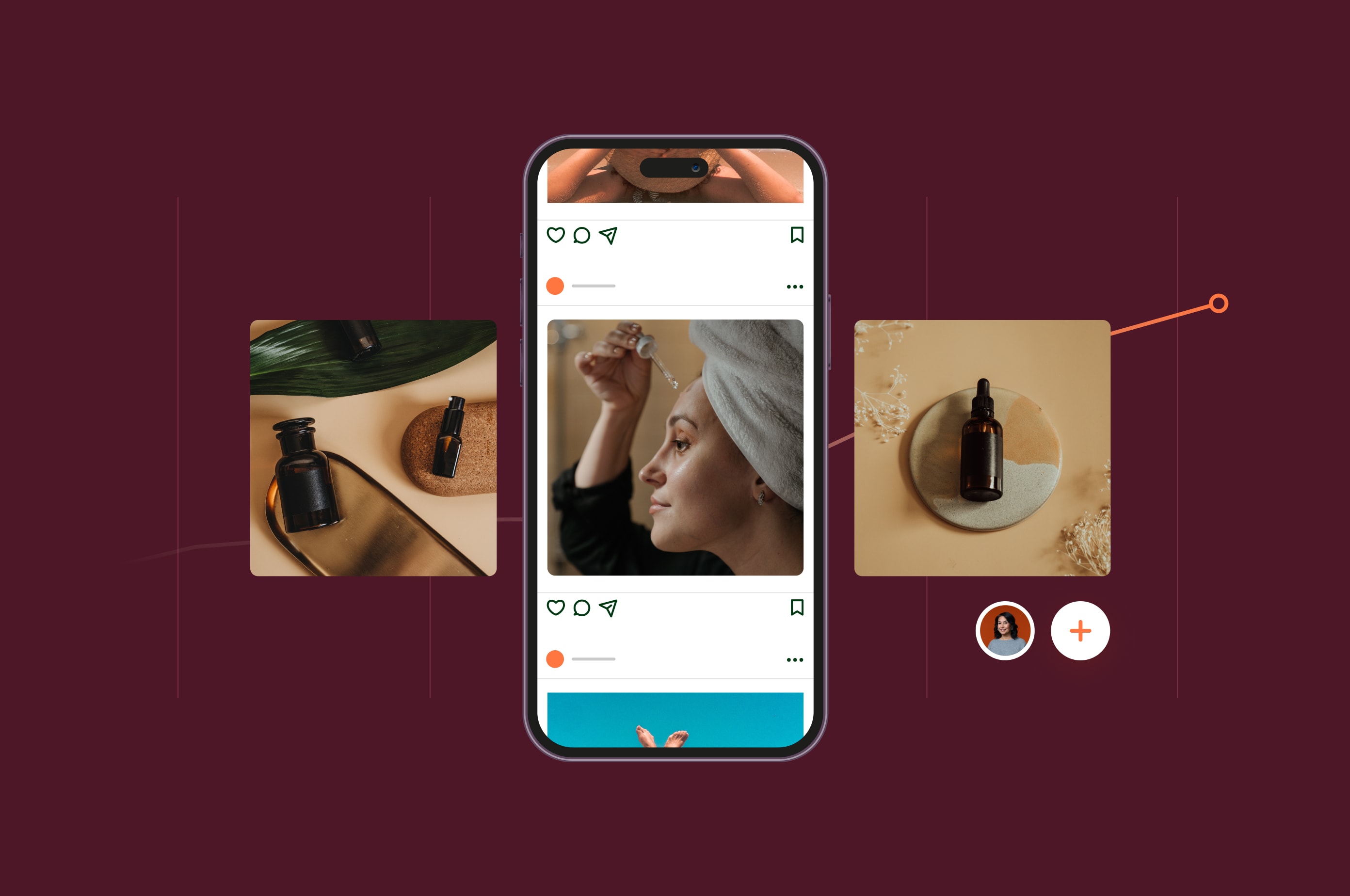How to Advertise on YouTube in 2024: 7 Steps (+Examples)
Want to know how to advertise effectively on YouTube? This guide covers all the essential strategies and techniques to help you reach your target audience and achieve your advertising goals.
 January 4, 2024
January 4, 2024 11 minute reading
11 minute reading
YouTube is the second-largest search engine in the world, and social media advertisers can reach 2.53 billion users worldwide on the platform.
In the United States, there are approximately 246 million active users—still a channel with massive reach. This is one of the reasons why companies invest in YouTube as an advertising platform, evident from the fact that 11.35% of Google’s revenue comes from YouTube ads.
Whether you’re an advertiser or a business owner, you can use YouTube to quickly increase brand awareness, grow your subscriber base, and catapult sales.
In this guide, we’ll explain how much these ads cost, the ROI, and how you can create YouTube advertising campaigns that hit your growth goals.
Hire a professional ad campaign manager on Fiverr
Types of YouTube video ads
There are several types of YouTube ad formats that run on desktop and mobile devices, including the following:
In-feed video ads
In-feed ads, or video discovery ads, show up in YouTube search results when someone looks up specific keywords. The goal is to reach an audience actively searching for videos related to your offer/brand. You only pay when someone clicks on the ad.
For example, in the image below, we searched for “makeup brushes,” which led us to an ad by Praush, a makeup product retailer.
Best for: Reaching an audience that’s either actively searching for the solution you offer or topics related to your offer.

Skippable in-stream ads
These are 30-second skippable video ads that appear before, during, or after the original video plays. Viewers have the option to skip the ad after five seconds. You can also add CTAs to encourage a click.
When the ad appears depends on the owner of the video, as they can set the timestamps for it. But the video is only displayed on channels that cater to your audience.
Best for: Creating brand awareness and targeting a broad audience, as it provides a user-friendly option to skip the content if it isn’t relevant. You can also use it to grow your follower count.

Non-skippable in-stream ads
Non-skippable video ads are 15 seconds or shorter and don’t let the user skip them. The benefit is that the entire ad is viewed, so your message gets across to the intended audience. ABecause these are unavoidable ads, view rates matter here, so non-skippable ads are paid for per 1,000 views.
Best for: Quick, creative videos to capture attention, such as ads focused on brand awareness and remarketing campaigns.
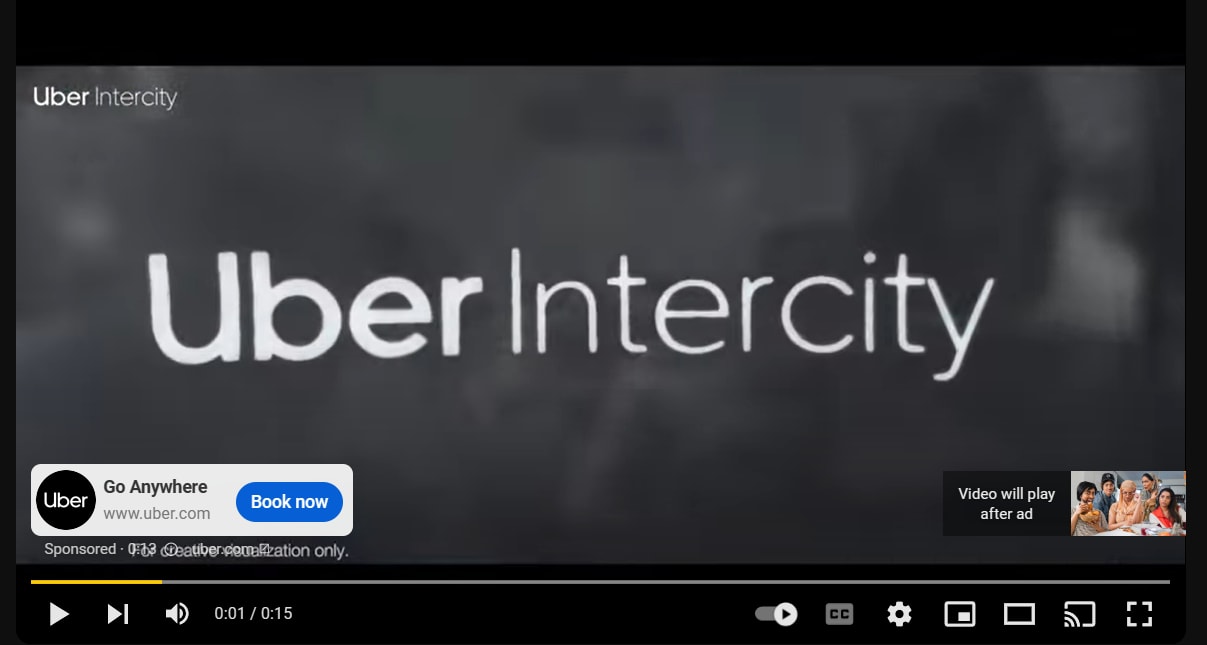
Bumper ads
Bumper ads are shorter versions of non-skippable in-stream ads, less than six seconds long. Bumper ads are also paid for per 1,000 views.
Best for: Remarketing campaigns to reinforce your brand’s message.
For example, in the image below, Uber uses a short ad to show how you can use its intercity service to travel between two nearby cities.
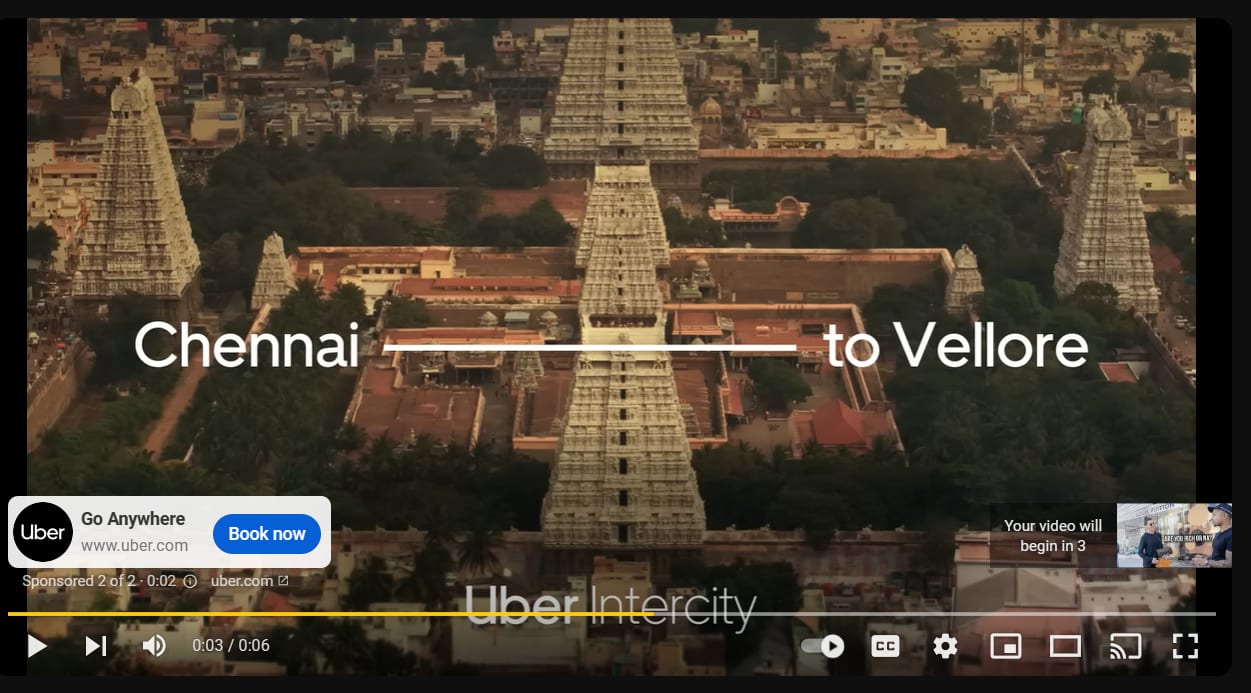
Overlay ads
Overlay ads are static ads that appear on the lower 20% of a video. They remain throughout the video, but users do have the option of closing them. It’s an excellent way to promote your brand/offer on YouTube without interrupting the viewing experience.
The image needs to follow the given dimensions:
728 x 90 px
480 x 70 px
468 x 60 px
450 x 50 px
Best for: Driving traffic to your website, store, or landing page. For example, limited-time offers that are a part of direct response campaigns.
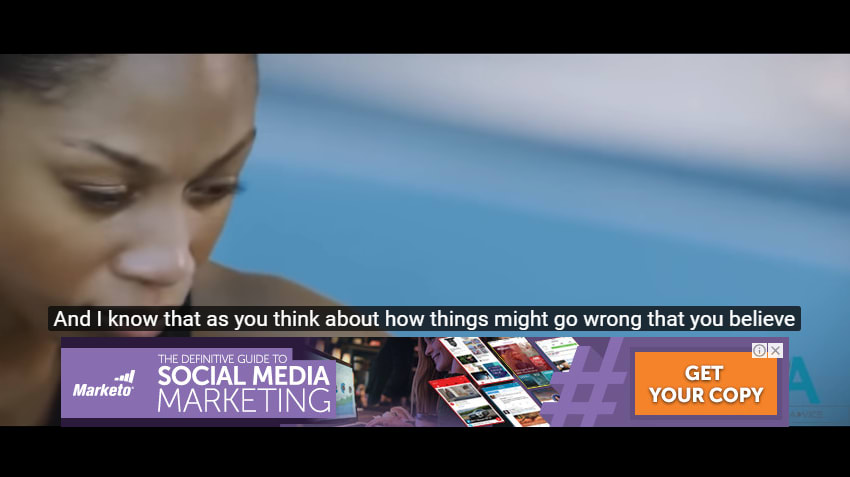
Display ads
Display ads appear on the right side of the screen, next to the video. They either have a visual accompanied by text, or text and a CTA. You can use the specifications offered by YouTube to craft one for different devices.
Best for: Driving traffic to your website or generating leads through gated offers.
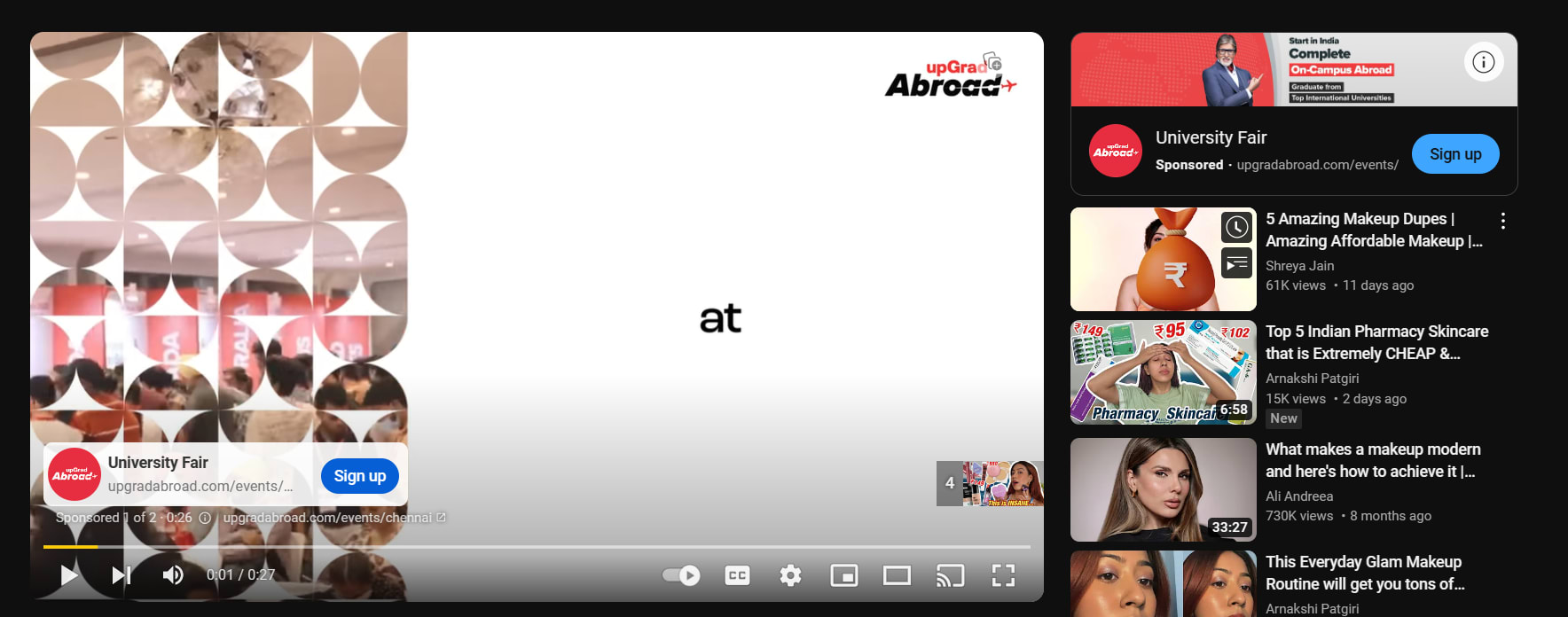
Masthead ads
If you open YouTube’s homepage and see a massive rectangular visual with a CTA, that’s a masthead ad. These offer a lot of visibility to your brand, so masthead ads are considered premium ad space on the platform. This also means they cost a lot.
You can expect to pay several hundred thousand dollars for one ad, depending on whether you use the CPM masthead or cost-per-hour (CPH) bidding method.
Best for: Generating massive impact in a short period for things like product launches and company announcements.
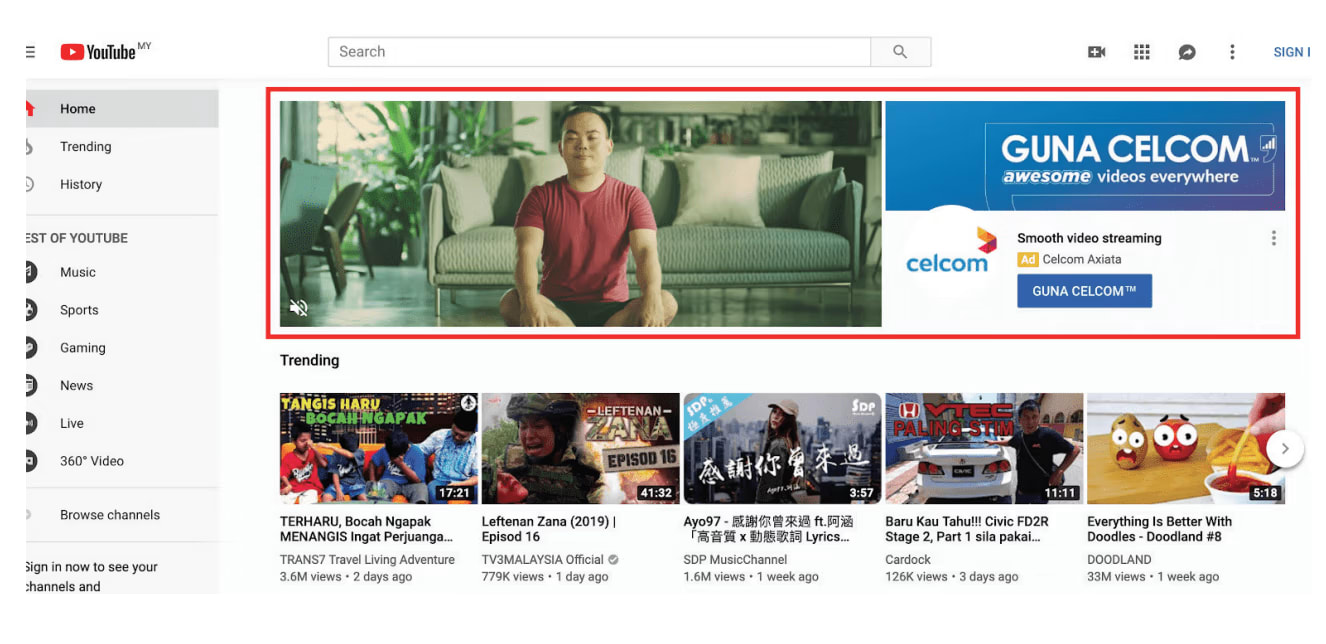
How to create a YouTube ad campaign in 7 steps
Now that you know what kinds of ads you can create and how much they can cost, here’s a step-by-step process for beginners creating an ad campaign.
Step 1: Create a video ad for your campaign
Your video ad should be short, engaging, and have a clear call to action (CTA). YouTube doesn’t have a maximum ad length, but the shorter the ad, the better the response. However, the type of video you create should depend on your goal, such as:
Introducing a new product or service
Announcing the launch of a brand
Generating leads for your product/service
Funneling visitors to your website
Promoting a store or app
For example, if introducing a new product, create an explainer video that conveys the problem the product solves. But a narrative-driven video works best if you’re trying to increase brand awareness.
Your visuals, audio, and text content should align with your brand’s identity and campaign goals. You also need to pay attention to current social trends.
You can use AI content creation tools to jumpstart the process.
Step 2: Upload your video to YouTube
After you’ve created the video, it’s time to upload it to your YouTube channel:
Log in to your YouTube account.
Click the profile icon on the top right corner of your screen.
Click on “YouTube Studio” or “Your Channel.”
Click on the blue “Upload Video” icon.
Select your video file.
Fill in the details like title, description, and tags.
Select “Publish.”

Step 3: Create or sign into your Google Ads account
Next, go to ads.google.com and log into an existing account or create one. If you’re making one, click on the “Start Now” button to get started.
Link your Google Ads account to your YouTube channel, as your video will be pulled from there. To link these accounts, follow these steps:
Go to YouTube Studio.
Click on “Settings.”
Click on “Channel.”
Select the “Advanced Settings” option
Choose the “Link Account” option.
Add your Google Ads customer ID.
Click on “Save.”
This connection lets you access your videos when setting up ads and track performance effectively.
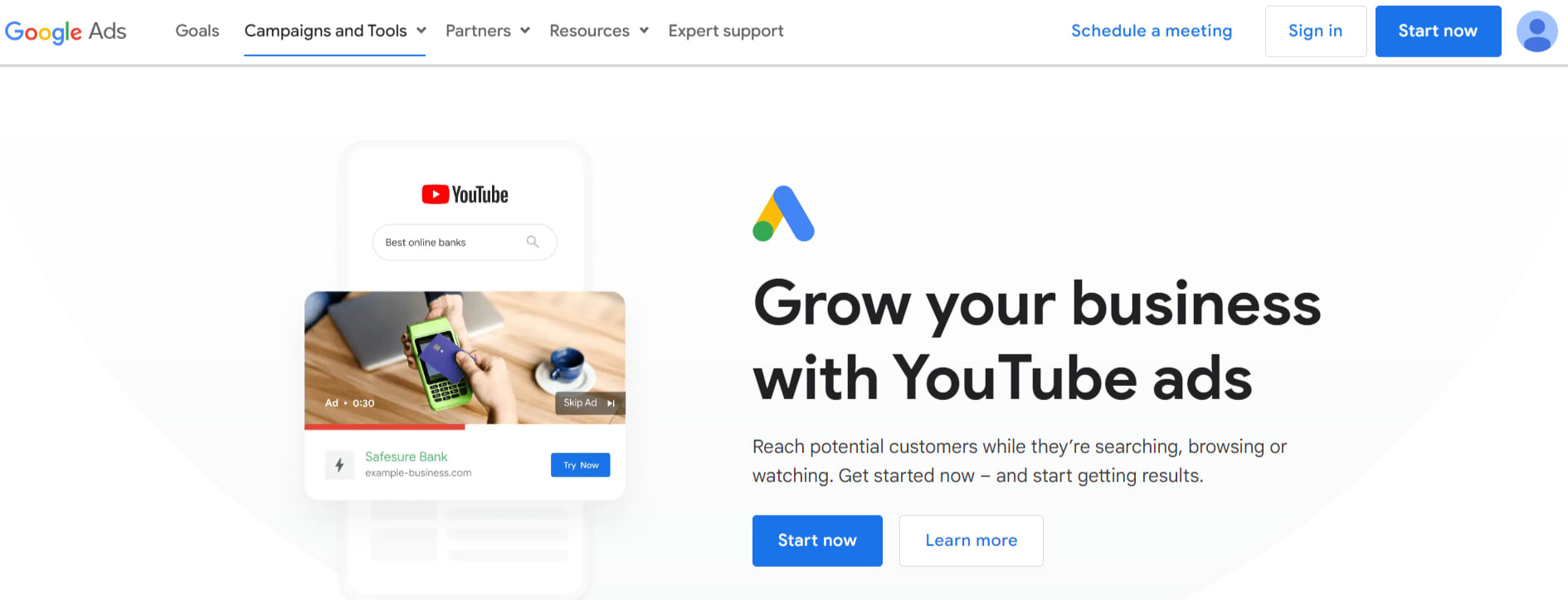
Step 4: Start a new campaign and choose an objective
Within your Google Ads dashboard, search for the “+” sign or “Create” to start a new campaign. Once you click on it, you’ll see a list of options to set a campaign objective. These include:
Sales
Leads
Website traffic
Product & brand consideration
Brand awareness
App promotion
Local store visits
Create without goal guidance
Depending on your goals, choose the appropriate option. Choose the “Without a goal guidance” option if you don’t have a specific goal.
Once you do, select the campaign type and subtype.

Step 5: Select the campaign type and subtype
Campaign type refers to the type of ad you want to run. To run YouTube ads, choose the “Video” option for the campaign type.
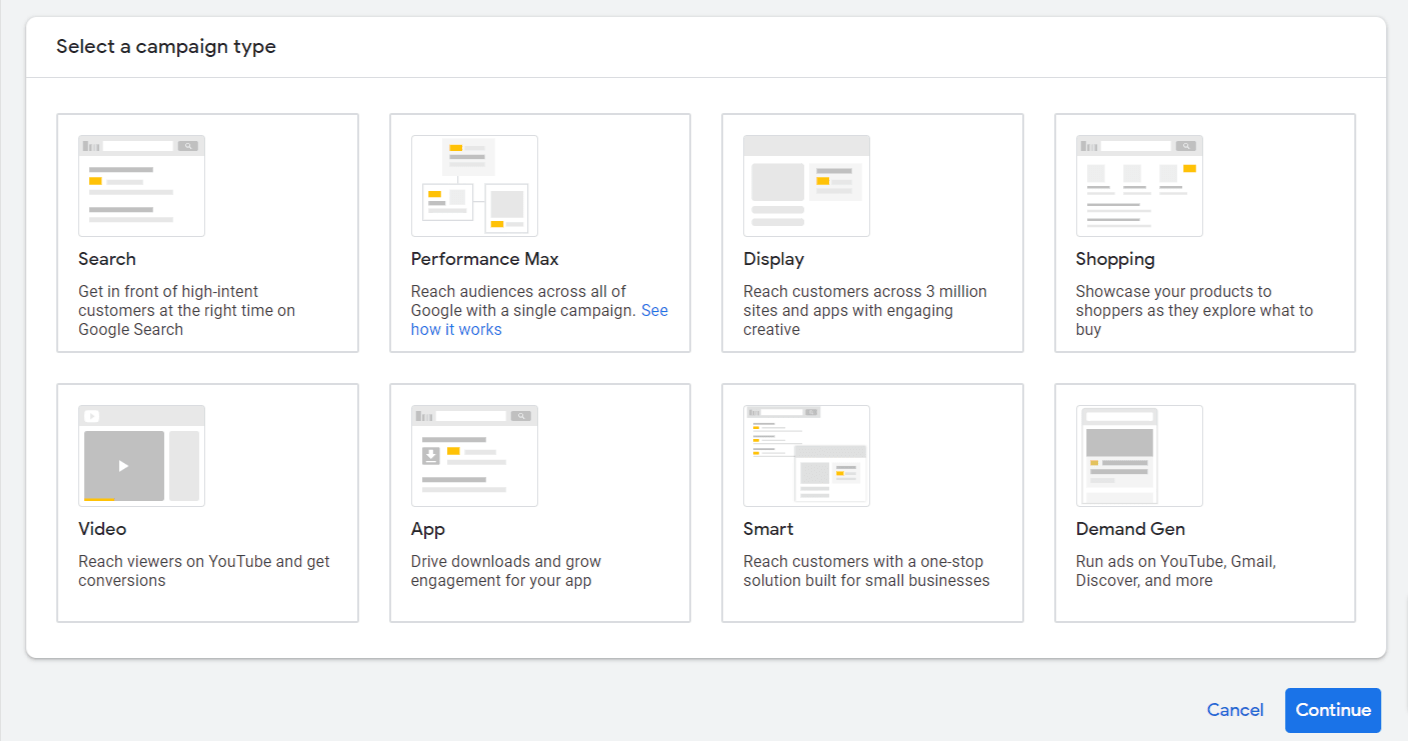
This will result in another set of options called the campaign subtype, where you can choose the ad type you want to run.
For instance, if you choose “Non-skippable in-stream ad,” viewers can’t skip your ad, improving message delivery. Select a subtype that best resonates with your campaign objectives and daily budget.
In October 2023, Google launched a new option called “Video Views,” where you only pay when a user chooses to watch your ad. You can do this via skippable in-stream, in-feed, and Shorts ads.
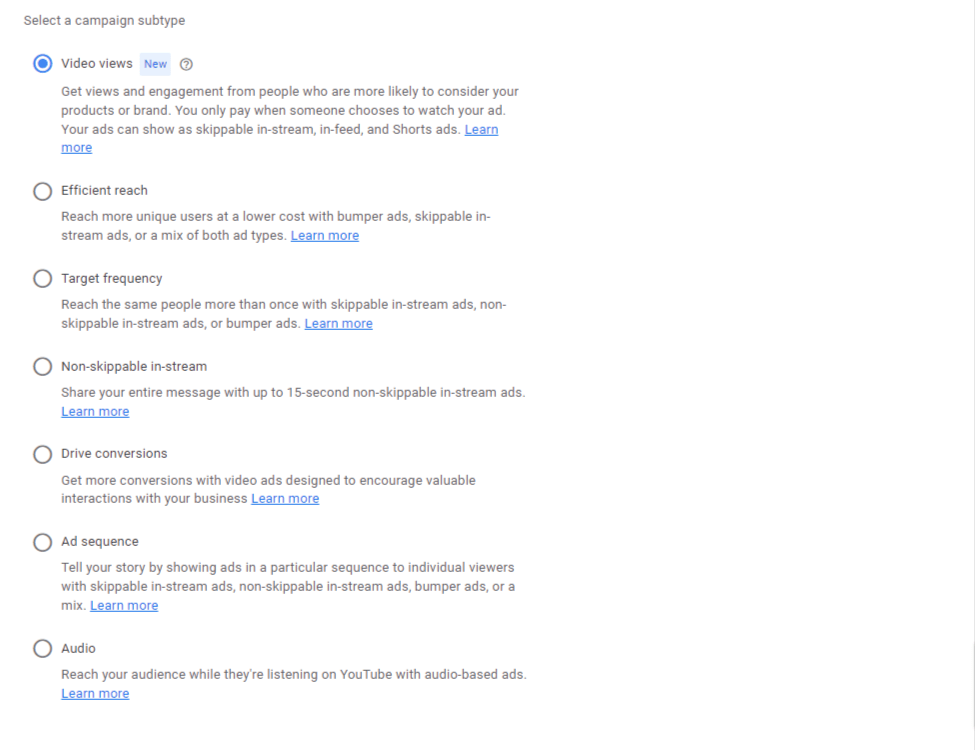
Step 6: Define the campaign parameters
After selecting the campaign types, you need to choose your bidding strategy. You can do this using three ways:
Cost per view (CPV): You only pay when someone watches your ad for more than 30 seconds.
Cost per impression (CPM): You only pay for every 1,000 views you get.
Cost per action (CPA): You only pay when someone takes the desired action.
But that doesn’t mean each strategy is available for every ad type. For instance, non-skippable in-stream ads can only use the target CPM strategy.
So, define your budget and add the dates of your video campaign based on that.

Next, choose the countries and cities you want to target and the languages potential customers speak. This depends on your target audience and where they live. Look at your buyer personas to guide this process.
If required, you can also add additional videos related to your video ad to reinforce your message in the “Related videos” section. For example, if your ad is about a brand launch, you can add a video with a product showcase to show what your brand does.

You can also choose to broadcast it on other video partners in the Google Display Network.
Create your ad group by filling out the following parameters:
Demographics: What is the age, gender, parental status, and household income of your audience?
Audience: Who are your audience segments, and what are their interests?
Keywords: What keywords should the content have so that your ad appears with them?
Topics: What topics should the ads appear on?
Placements: Which channels do they appear on? (YouTube, websites, etc.)

Step 7: Launch the video ad campaign
Add the URL of your YouTube video under the “Create your video ads” section. You can skip this now if you don’t have a video yet. But your ad will only run when you upload a video.
Next, add the target CPM amount—the average amount you will spend to reach this audience. Google will optimize the campaign based on that.
Once you’re done, click on “Create campaign” and you’re set.
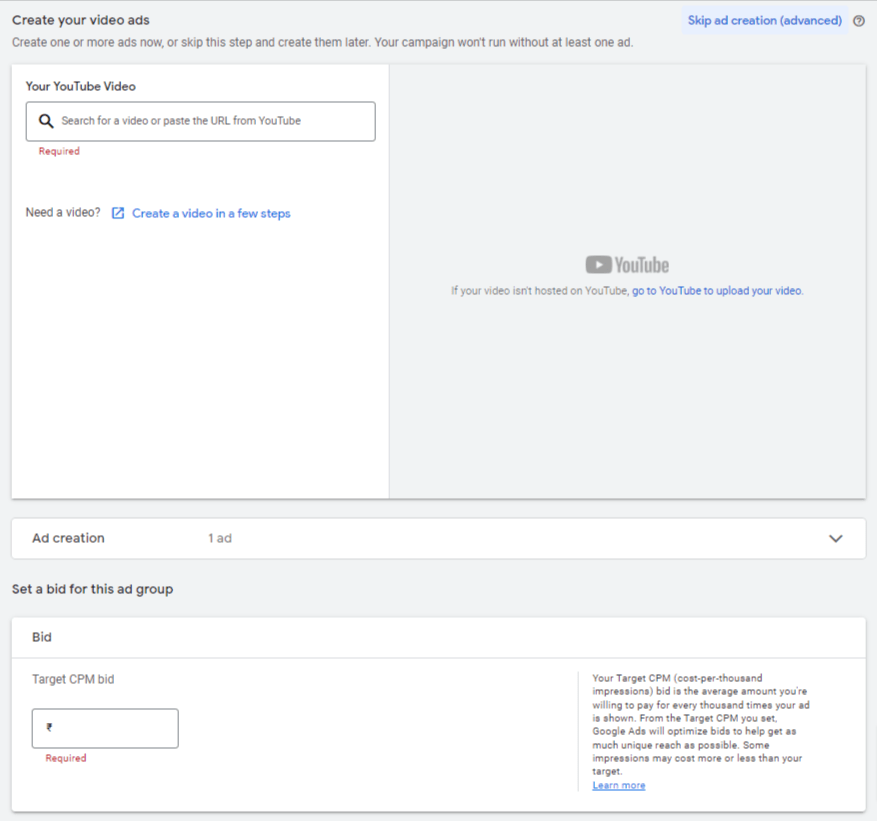
Planning to launch a YouTube ad campaign? Use our social media planner template to decide the schedule.
Is YouTube video advertising worth the effort?
Advertising costs for YouTube can range anywhere from 10¢ to 30¢ per view. To reach 10,000 people, you’ll have to pay $1,000 to $3,000 for one ad.
It depends on the bidding strategy you use, your campaign goals, and your budget. You should also consider the overall video marketing strategy and how these efforts fit into it. This will help you optimize your resources accordingly.
If you’re wondering if the ROI on YouTube ads is worth the investment, here’s what a few small business owners and marketers had to say:
Micro Scooters
Micro Scooters, a scooter manufacturer, uses a combination of remarketing lists for search ads (RSLA) and YouTube video ads to retarget users who have visited its website previously.
Here’s an example of what it has produced:
Such campaigns have regularly helped the brand get a return of more than 600%, as the ads nurture those familiar with their brand, nudging them to buy.
Danielle Barclay, the head of ecommerce, recommends keeping it short with music and a clear CTA to create effective ads.
“Add a ‘Shop now’ or similar button,” says Barclay. “Try to focus on one product benefit at a time. Build the campaign with several videos, and use watch time to filter how interested the customer is before putting them into additional audiences and targeting them with other video content.”
Perfect Locks
Perfect Locks, a hair extensions company, has consistently generated positive metrics on YouTube. Its influencer campaign resulted in an average click-through rate of 8% and an average conversion rate of 12% in the past year for its YouTube campaigns.
Using social media monitoring tools, the company also measures other advertising metrics like:
Click-through rate (CTR)
Conversion rate
Engagement rate (likes, comments, shares)
Direct sales
The most successful campaigns were a series of tutorials that explained the versatility of its hair extensions.
“We teamed up with some of the biggest beauty influencers to show off different looks and styles with our products,” says Priyanka Swamy, CEO of Perfect Locks. “Not only did it get millions of views, but it also got us a lot more website visitors and conversions.”
When asked about what influenced the company’s decision to hire freelancers, she explained:
“First, it gave us access to people who know a lot about video production, writing scripts, and YouTube SEO. Plus, freelancers often come up with new video ideas and creative approaches that can give our campaigns a boost. It’s been a great way to save money and help our brand grow.”
Sotheby’s International Realty
Maureen McDermut, a realtor for Sotheby’s International Realty, has used remarketing campaigns to generate leads successfully.
A video her company shot for a property listing boosted open house foot traffic by 40% and generated over 40 qualified leads.
“One thing a realtor needs to be is an expert in their community,” says McDermut. “So we shot a video about Montecito, highlighting some of the key features and points of interest. It has been very successful in lead generation.”
Here’s an example of a video listing the company created:
Hire experienced creatives to create high-return YouTube ads
YouTube advertising can be expensive, but the returns speak for themselves. YouTube ads should form a critical part of your digital marketing strategy.
Crafting a compelling video ad is an art and science. You need to know who your audience is and develop an ad that tells your brand’s story as quickly as possible.
This is why it’s best to hire creative professionals who know what they’re doing and know how to use the right content creation tools to get the job done faster.
For instance, to create a good ad, you need a team of professionals that consists of:
A messaging strategist
If they have experience catering to your audience and understand the nuances of your industry, they can create campaigns that drive results with minimal ad spend. This lets you get positive returns in a short period.
Ready to hire the right freelance advertising talent? Sign up for Fiverr today.
